DAY 1 SEP 23, THURSDAY:
While Mexico City is big, both in terms
of population and area, most of the city's best tourist attractions
and popular things to do are in the historic city center (Centro
Histórico de la Ciudad), a 15-sqkm UNESCO World Heritage Site
containing more than 1,400 important buildings from the 16th to 19th
centuries. For travelers, this is one of the best places to
visit in Mexico, as examples of the city's Aztec origins and its
Spanish colonization can all be enjoyed on foot.
But, the Zocalo was closed for visitors due to visiting foreign dignitaries. So we decided to visit National Museum of Anthropology. It is 2 km from our hotel. So we Uber'd for around 49 pesos [20 pesos = 1 USD]..Metro Auditorio (Line 7) and Metro Chapultepec (Line 1) are near the museum..The Museum is approximately 1.3 km away. from the subway stations, so it made sense to Uber.
The National
Museum of Anthropology [Museo Nacional de Antropología]
Av. Paseo de la Reforma s/n,
Polanco, Bosque de Chapultepec I Secc, Miguel Hidalgo, 11560 Ciudad
de México$ 80.00 MXN Tuesday to Saturday,10:00 a.m. to 5:00 p.m


The museum lies in Chapultepec Park and
is hard to miss due to the huge monolithic figure marking its
entrance. .
Built in 1964, this strikingly
successful example of contemporary architecture is famous for its
magnificent displays of old Indian art treasures, most notably in the
Central Patio, part of which is roofed by a gigantic stone shelter
supported by an 11-meter-tall column with waterfalls symbolizing the
eternal cycle of life.
As spectacular as the building itself is its vast collection, which includes archaeological finds from extinct Indian cultures along with details of the lifestyles of contemporary Indian inhabitants of Mexico. houses four square kilometers of exhibits in 23 exhibition halls
This is how the body is buried with funerary objects laid around it for after life.The vessels for storing/serving wine/fermented agave juice are shaped artisticallyFootwear
Stonework
Wine vessels
We had checked in our bags at the entrance locker. It had sandwiches, water and nuts, raisins.
We were hungry, went to the cafe on the premise, it was exorbitant and hardly any veg options. Son went back to the locker, got the bag and we had our lunch at the center courtyard. Rest rooms are in corners, long way to walk.
We continued with our visit.

MUSIC stuff
Great to see these guys dance😍😆
The hierarchy of their society
The Aztec sun stone (Spanish: Piedra del Sol) / Aztec Calendar
is the most famous work of Mexican sculpture It measures 3.6 metres (12 ft) in diameter and 98 centimetres (39 in) thick, and weighs 24,590 kg (54,210 lb)
Shortly after the Spanish conquest, the monolithic sculpture was buried in the Zócalo, the main square of Mexico City. It was rediscovered on 17 December 1790 during repairs on the Mexico City Cathedral. Following its rediscovery, the sun stone was mounted on an exterior wall of the cathedral, where it remained until 1885. Early scholars initially thought that the stone was carved in the 1470s, though modern research suggests that it was carved some time between 1502 and 1521.
In the center of the monolith is the face of the solar deity, Tonatiuh.
The four squares that surround the central deity represent the four previous suns or eras, which preceded the present era, "Four Movement" (Nahuatl: Nahui Ōllin).
The first concentric zone or ring contains the signs corresponding to the 20 days of the 18 months and five nemontemi of the Aztec solar calendar (Nahuatl: xiuhpohualli)
The second concentric zone or ring contains several square sections, with each section containing five points. Directly above these square sections are small arches are said to be feather ornaments. Directly above these are spurs or peaked arches that appear in groups of four.[19] There are also eight angles that divide the stone into eight parts, which likely represent the sun's rays placed in the direction of the cardinal points.
Third and outermost ring
Two fire serpents, Xiuhcoatl, take up almost this entire zone. They are characterized by the flames emerging from their bodies, the square shaped segments that make up their bodies, the points that form their tails, and their unusual heads and mouths. At the very bottom of the surface of the stone, are human heads emerging from the mouths of these serpents. Scholars have tried to identify these profiles of human heads as deities, but have not come to a consensus.[19] One


Reproduction of the Temple of the feathered serpent in Teotihuacan
The halls were extensive. After seeing 4 halls, I sat on a bench outside while son went up to see the exhibits of Teotihuacan on top floors.
A Chinese girl found me worthy of pics and was taking my picture!! I was probably the star of Weibo that day!😀😁
I was jet lagged, exhausted and couldn't care less. I even lay down on that bench and stretched till son returned.
He said the museum was open till 7 pm. I felt done by 4.30.
We decided to return back to hotel.
Our hotel lift had broken down and we had walked down 11 flights of stairs in the morning. Jose the housekeeper had told us the lift will be in action by 2 pm. Son whatsapped him, NO, the lift was still not functioning.
We called an Uber and went back.
Climbed up 11 floors and reached our room.
WOW! WHAT A DAY!
DAY 2 REPORT CONTINUES HERE:




















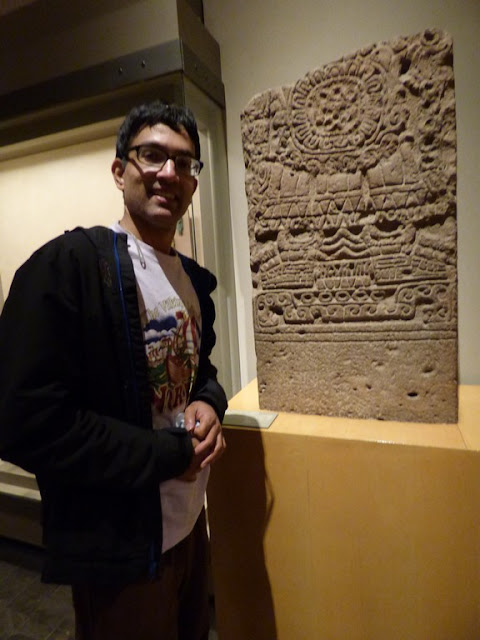

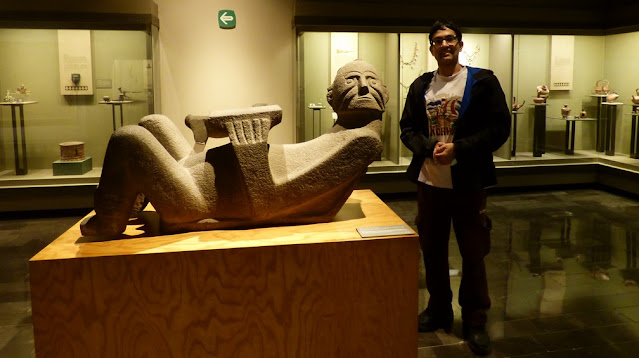


























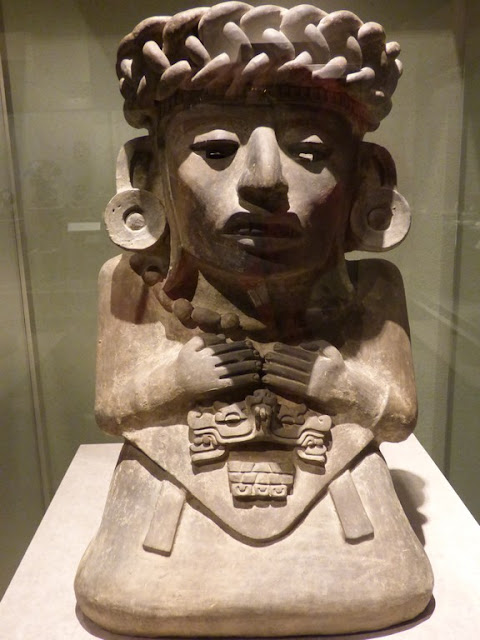


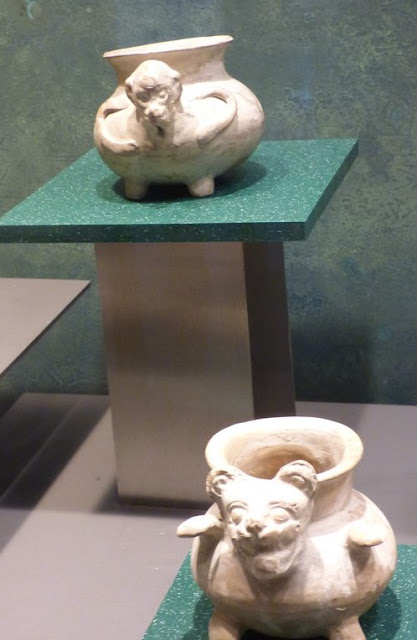










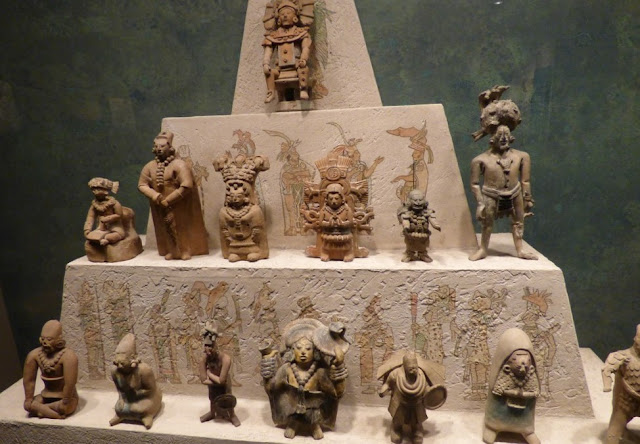




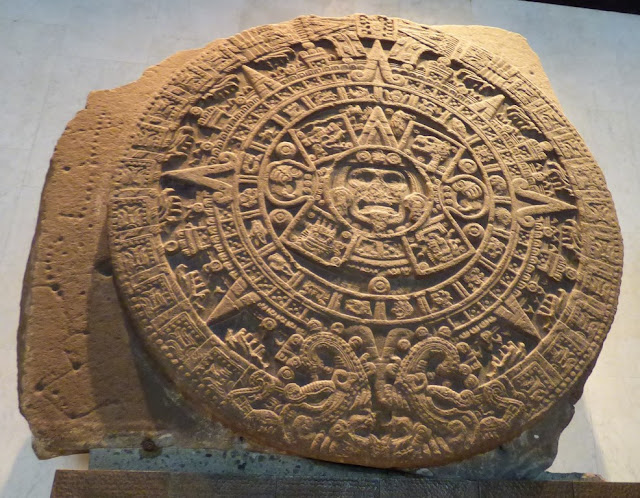





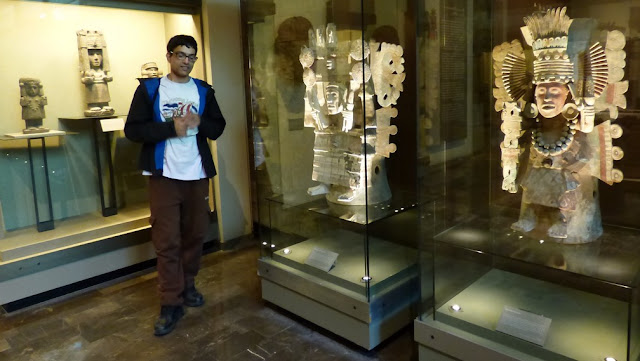









No comments:
Post a Comment